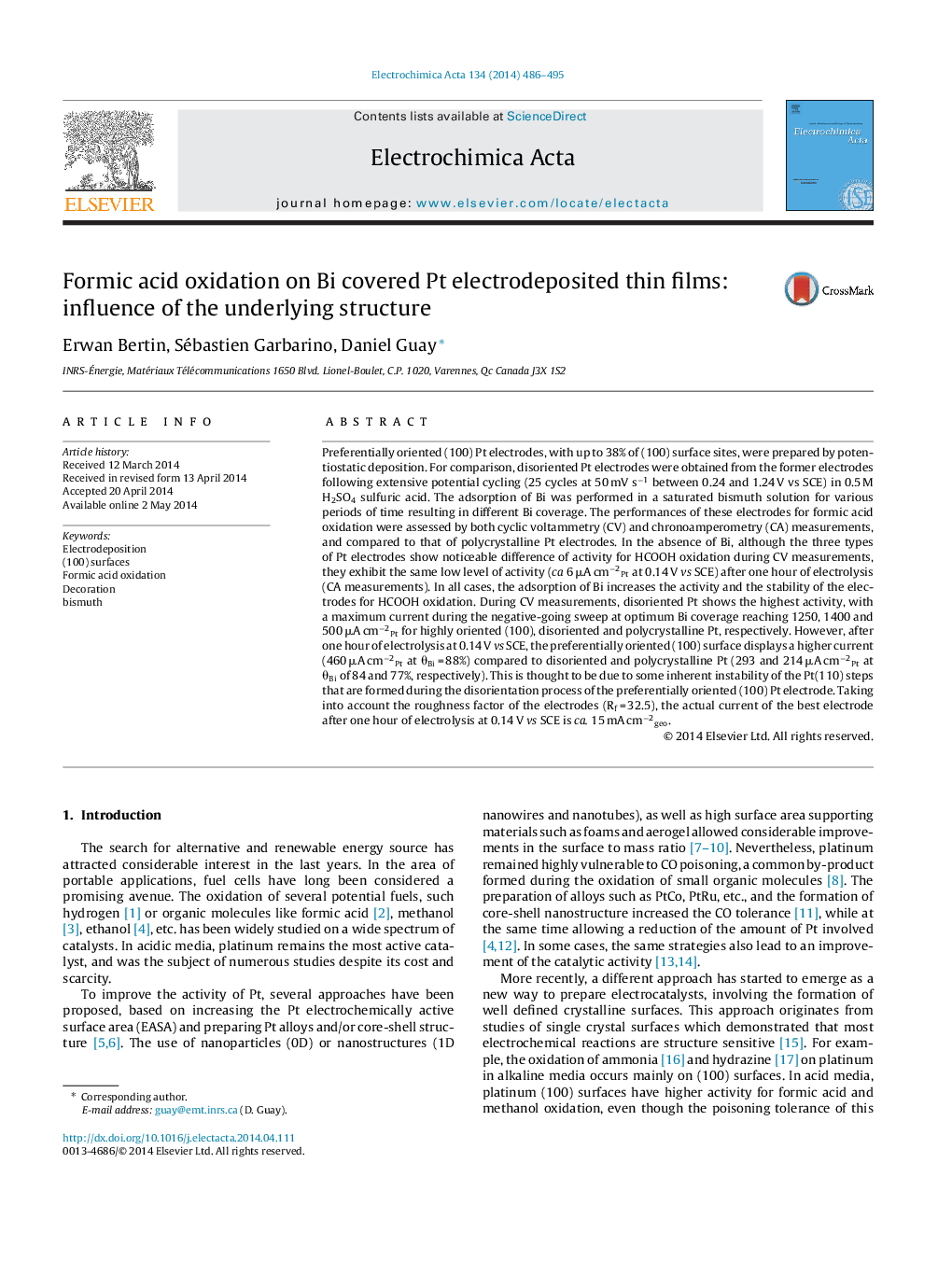| کد مقاله | کد نشریه | سال انتشار | مقاله انگلیسی | نسخه تمام متن |
|---|---|---|---|---|
| 185698 | 459601 | 2014 | 10 صفحه PDF | دانلود رایگان |
Preferentially oriented (100) Pt electrodes, with up to 38% of (100) surface sites, were prepared by potentiostatic deposition. For comparison, disoriented Pt electrodes were obtained from the former electrodes following extensive potential cycling (25 cycles at 50 mV s−1 between 0.24 and 1.24 V vs SCE) in 0.5 M H2SO4 sulfuric acid. The adsorption of Bi was performed in a saturated bismuth solution for various periods of time resulting in different Bi coverage. The performances of these electrodes for formic acid oxidation were assessed by both cyclic voltammetry (CV) and chronoamperometry (CA) measurements, and compared to that of polycrystalline Pt electrodes. In the absence of Bi, although the three types of Pt electrodes show noticeable difference of activity for HCOOH oxidation during CV measurements, they exhibit the same low level of activity (ca 6 μA cm−2Pt at 0.14 V vs SCE) after one hour of electrolysis (CA measurements). In all cases, the adsorption of Bi increases the activity and the stability of the electrodes for HCOOH oxidation. During CV measurements, disoriented Pt shows the highest activity, with a maximum current during the negative-going sweep at optimum Bi coverage reaching 1250, 1400 and 500 μA cm−2Pt for highly oriented (100), disoriented and polycrystalline Pt, respectively. However, after one hour of electrolysis at 0.14 V vs SCE, the preferentially oriented (100) surface displays a higher current (460 μA cm−2Pt at θBi = 88%) compared to disoriented and polycrystalline Pt (293 and 214 μA cm−2Pt at θBi of 84 and 77%, respectively). This is thought to be due to some inherent instability of the Pt(110) steps that are formed during the disorientation process of the preferentially oriented (100) Pt electrode. Taking into account the roughness factor of the electrodes (Rf = 32.5), the actual current of the best electrode after one hour of electrolysis at 0.14 V vs SCE is ca. 15 mA cm−2geo.
Journal: Electrochimica Acta - Volume 134, 10 July 2014, Pages 486–495
